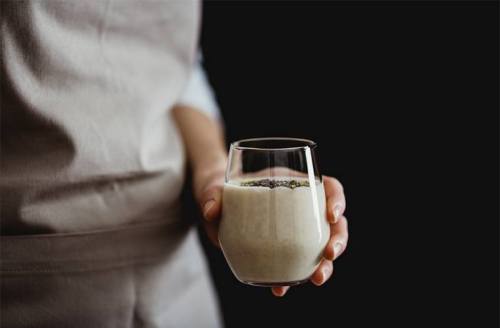You devote Sunday nights to meal prepping and fill your blender with trending ingredients to make the perfect superfood smoothie. And you’re rewarded with…bloating. What gives?
Tracy Lockwood, RD, noticed she had a surplus of clients coming in with the same complaint: They prioritize eating healthy, filling their diets with buzzy, nutrient-dense foods—only to experience worse digestive problems than before.
The culprit causing all the distress: chia seeds. “Fifty percent of my clients are experiencing this,” Lockwood says. How can something that’s supposed to be good for your body (hello, omega-3s and major protein) be the source of some serious digestion drama? And perhaps more importantly, what does this mean for your chia seed pudding habit?
Here, the registered dietitian gets real on the big problem from the little superfood.
How tiny seeds can cause big bloat
Yes, big things can come in small packages. “In order for the chia seed to move through the gut, it draws water from the intestine area, working like a sponge,” Lockwood explains. “They also expand in your stomach, so both of those things can cause a lot of bloating.”
She says that chia seeds absorb between 15 and 20 percent times their weight in water—that’s a lot. Case in point: When you add chia seeds to yogurt or a smoothie, you can see them get bigger. (In fact, it’s one of the superfood’s selling points.) Now imagine that happening in your stomach. Quite the visual, right?
The easy fix to prevent bloating
Despite the complaints she’s been getting, Lockwood is still a chia seed fan: “They’re high in fiber, protein, and are a good healthy fat,” she says. Her solution? Just soak them beforehand. That way, they’ve already expanded before they enter your digestive track.
“My trick is to put them in water for five to ten minutes before eating,” the registered dietitian says, adding that the ratio of chia seeds to water should be one-to-nine. “So if you have one teaspoon of chia seeds, soak them in nine teaspoons of water.” And yes, soaking them in smoothies, pudding, and soup works, too—so just let your food sit for a bit before digging in.
Soaking them in smoothies, pudding, and soup works, too—so just let your food sit for a bit before digging in.
Another tip: Drink plenty of water whenever you load up on chia seeds—especially if you’re eating out and can’t exactly hop in the kitchen to soak ’em. “Because the chia seeds work like a sponge in the body, it’s important to drink more water so you don’t get dehydrated,” she says.
Water also helps to keep things moving. “Chia seeds are so fibrous that they digest slowly—which is great because it curbs appetite and keeps us full longer. But if we don’t have enough fluid to push it along, it’s sitting in our stomachs and then we get constipated,” Lockwood explains. You can also try supplements for bloating.
You’ll also want to avoid adding chia seeds to anything that’s already rich in fiber, like salad (that other surprising bloat culprit)—it’s just too much for the body to process all at once, she says.
How much chia should you eat?
If your diet is a little lacking in the fiber department, Lockwood says to start small when it comes to chia seeds, eating only one teaspoon at a time (after soaking)—AKA about one-third of the recommended serving size. “See how your body responds, and then increase it gradually, up to two-and-a-half teaspoons,” she says.
And if that one teaspoon is causing you any discomfort, it’s probably time to take a break from them all together—at least for now. “Some people are just not meant to absorb it,” she says. Heartbreaking? A little—but hey, there are other ways to get your superfoods and fiber.
Chia seeds are still tiny wonders that have earned their protein-packed, omega-3-boosting rep. They’re just a bit more powerful than you might have thought—kind of like those small but mighty moves you do at barre.
Oh hi! You look like someone who loves free workouts, discounts for cult-fave wellness brands, and exclusive Well+Good content. Sign up for Well+, our online community of wellness insiders, and unlock your rewards instantly.
Sign Up for Our Daily Newsletter
Get all the latest in wellness, trends, food, fitness, beauty, and more delivered right to your inbox.
Got it, you've been added to our email list.











